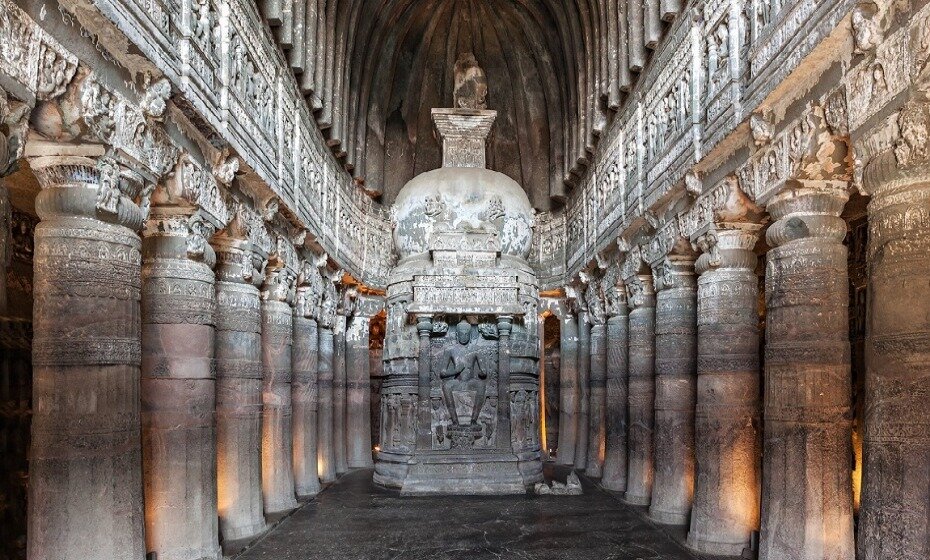Ajanta Caves: A Journey to World Heritage Status
Nestled in the rocky landscapes of Maharashtra, India, the Ajanta Caves stand as a testament to the artistic brilliance of ancient civilizations. These caves, adorned with intricate sculptures and vibrant paintings, have earned their place on the prestigious UNESCO World Heritage Site list.

A Glimpse into History:
The Ajanta Caves, carved into the rock face of the Waghora River valley, date back to the 2nd century BCE and 5th century CE. These caves served as sanctuaries for Buddhist monks, offering spaces for meditation, study, and communal activities. The remarkable art within the caves showcases the evolution of Buddhist architecture and the transition from Hinayana to Mahayana Buddhism.
Date of Designation:
The Ajanta Caves were designated as a UNESCO World Heritage Site on December 15, 1983. This recognition elevated their status from national treasures to globally shared heritage, ensuring their protection and preservation for future generations.
Reasons Behind Selection:
The inclusion of the Ajanta Caves on the list of World Heritage Sites is attributed to several key reasons:
- Architectural Marvel: The caves exhibit a blend of innovative architecture and intricate artwork. From the impressive rock-cut facades to the detailed sculptures and paintings that adorn the interiors, the Ajanta Caves showcase the skilled craftsmanship of their creators.
- Historical Significance: The caves offer valuable insights into the social, cultural, and religious practices of ancient India. The murals and sculptures depict scenes from the life of Buddha, Jataka tales, and daily life during that era, providing a vivid historical narrative.
- Artistic Legacy: The Ajanta Caves are celebrated for their exquisite murals, some of the finest examples of ancient Indian art. These paintings, executed with natural pigments, showcase a high level of artistic skill and offer a visual journey into the artistic sensibilities of the past.
Impact of World Heritage Designation:
The recognition of the Ajanta Caves as a World Heritage Site has had several noteworthy impacts:
- Preservation and Conservation: The UNESCO status has encouraged rigorous conservation efforts to safeguard the caves’ delicate artworks and structures. This commitment ensures that the unique heritage is preserved for future generations.
- Tourism and Economy: The World Heritage Site status has bolstered tourism to the region, benefiting local economies and communities. It has created employment opportunities and spurred the growth of tourism-related industries.
- Cultural Exchange: The Ajanta Caves’ global recognition fosters cultural exchange and cross-cultural appreciation. It encourages dialogue among nations and promotes a deeper understanding of India’s rich artistic and historical heritage.
- Educational Value: The status prompts increased research, educational programs, and initiatives aimed at promoting awareness about ancient Indian history, art, and architecture.
The Ajanta Caves’ journey from being ancient Buddhist sanctuaries to achieving UNESCO World Heritage Site status underscores their significance as a bridge to the past. As we admire the artistic treasures within these caves, let us also recognize the responsibility to protect and cherish this heritage, ensuring that the Ajanta Caves continue to inspire and educate generations to come.




